Institutions that serve communities are being wiped from the planet. Today, I want to share a personal story about one such institution, and then talk about how newspapers, magazines, and other media are staring into the great abyss as well.
When Institutions Die
When I was younger, I worked The Corner Confectionary in Highland Park, New Jersey – an ice cream and candy shop that opened in 1924. Put simply: I loved being in this store, and putting smiles on people’s faces one scoop at a time. Nobody ever walked in this store that wasn’t happy to be there, and it was one of those rare places that was the center of community in town. I knew everyone, and everyone knew me. I was proudly, a soda jerk.
Long after I left, I always had fond thoughts of the Confectionary, knowing that it was continuing to put smiles on people’s faces. In the back of my mind, I had dreams of opening up an ice cream shop just like it when I retire. But all that changed a week ago.
- Last week I found out that the store had closed, the building sold, and a new owner was about to begin demolition on the amazing interior.
- After phone calls to the previous owner and township, I was able to reach the new owner, and asked what would happen to the mahogany paneling, and many vintage pieces in the store. He told me they are all going in the dumpster… tomorrow.
- I then made an absurd request: I wanted everything. Every wall panel, every booth, every table, every fixture, every piece of glass, every stool, every sign, and even the train track that circled the top of the store.
- Amazingly, the owner was open to this, but explained that others had already assessed the salvageability of the contents, and the prognosis was not good. Likely, there would be extensive damage, and it wouldn’t be worth the cost to move and rebuild. But… he welcomed me to come down and speak with his contractor.
Take a look at some of the destruction:
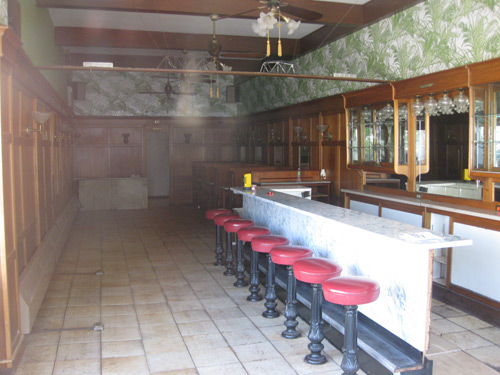
Before
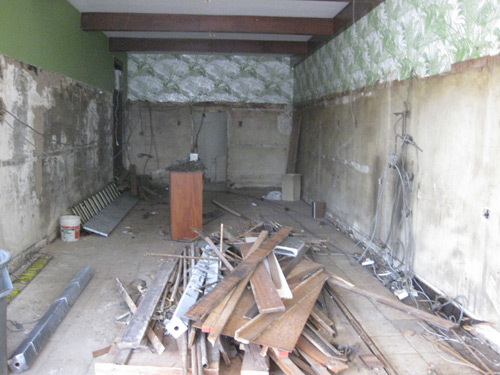
After
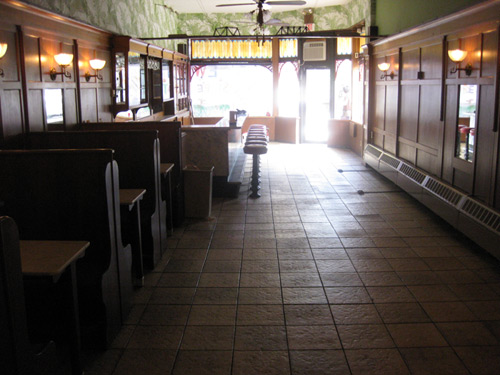
Before
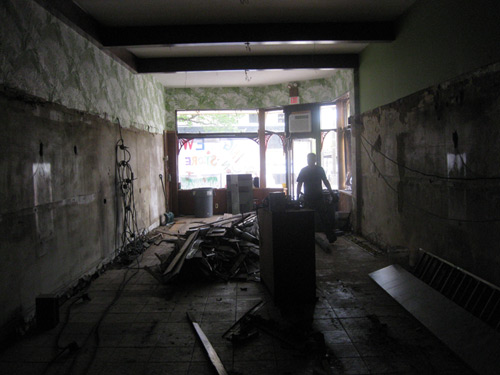
After
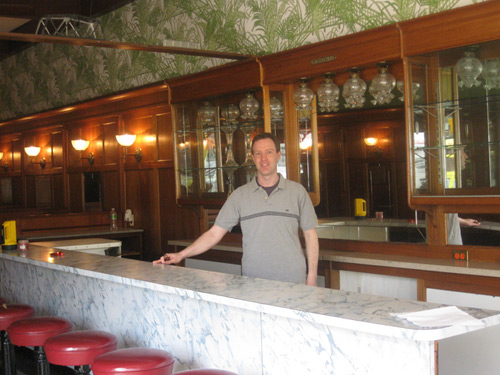
Before
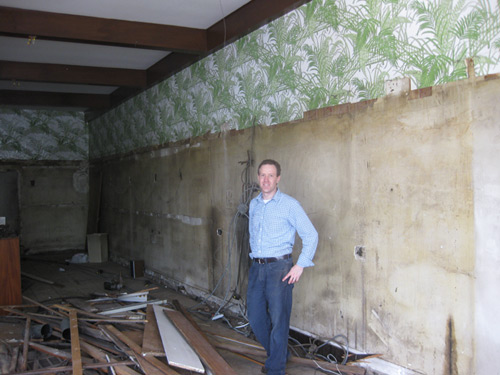
After
The End of Publishing as We Know It
As I think about The Corner Confectionary, I can’t help but see it as a metaphor for some newspapers, magazines, and large segments of other media as well. Brands who had thrived for decades, are suddenly shutting down, shrinking, and trying to reinvent themselves en masse. This is by no means a prediction, it is already history for many brands.
During the 20th century, the stewards for these brands protected many aspects of it – and poured their lives into these institutions to create something that served the public at large, and created a profitable business for the owners.
In the 21st century, many are finding that perhaps they did not change quickly enough with the advent of digital media, that other unforeseen competitors are eating up their marketshare, and that behavior changes within their audience are wreaking havoc on the value proposition that supported them.
The underlying reasons for The Corner Confectionary’s closing are not unlike these. I have been talking to residents of Highland Park and other business owners, all who have their own opinion as to how the Confectionary’s owners could have better protected the business end of things.
But we know about these issues; the question is – what is the way forward? Let’s take a look at an inspiring example…
Focus Less on Existing Skills and More on Customer Needs
BuyerZone’s Mie-Yun Lee forwarded me Jeff Bezos’ recent letter to Amazon.com’s shareholders. (thank you Mie-Yun!) An excerpt:
In this turbulent global economy, our fundamental approach remains the same. Stay heads down, focused on the long term and obsessed over customers. Long-term thinking levers our existing abilities and lets us do new things we couldn’t otherwise contemplate. It supports the failure and iteration required for invention, and it frees us to pioneer in unexplored spaces. Seek instant gratification – or the elusive promise of it – and chances are you’ll find a crowd there ahead of you. Long-term orientation interacts well with customer obsession. If we can identify a customer need and if we can further develop conviction that that need is meaningful and durable, our approach permits us to work patiently for multiple years to deliver a solution. “Working backwards” from customer needs can be contrasted with a “skills-forward” approach where existing skills and competencies are used to drive business opportunities. The skills-forward approach says, “We are really good at X. What else can we do with X?” That’s a useful and rewarding business approach. However, if used exclusively, the company employing it will never be driven to develop fresh skills. Eventually the existing skills will become outmoded. Working backwards from customer needs often demands that we acquire new competencies and exercise new muscles, never mind how uncomfortable and awkward-feeling those first steps might be.
In our retail business, we have strong conviction that customers value low prices, vast selection, and fast, convenient delivery and that these needs will remain stable over time. It is difficult for us to imagine that ten years from now, customers will want higher prices, less selection, or slower delivery. Our belief in the durability of these pillars is what gives us the confidence required to invest in strengthening them. We know that the energy we put in now will continue to pay dividends well into the future.
With this in mind, it’s likely that the ice cream shop died because they focused exclusively on selling ice cream (their existing skill), instead of identifying the changing needs of their community, and finding ways to evolve to serve those needs.
Now newspapers, magazines and other media find themselves in a similar situation – trying to shift how they serve their communities, as their businesses shrink at an accelerating pace.
Building a Business & Protecting a Legacy
When I walk around the offices at Reed Business Information, I regularly see the archives for magazines like Variety and Library Journal – which go back decades and decades. I pause when I can, to appreciate what thousands of others before me have built, and to appreciate their service to these industries – how this work has improved people’s lives.
And we see these institutions and legacies all around us. When some of them close up shop, we are shocked at the single final act. But this is not a cause, it is an effect. In reality, a million smaller actions (or inactions) lead to this result, which occurred over the course of years. There were many chances to save a business – to save an institution.
As I think about the road ahead, here are three things I am keeping in mind. Each is inspired by Jeff Bezos’ letter and my recent experience with The Corner Confectionary:
- Identify the Critical Needs of Customers
Many businesses describe themselves by explaining the features of their product or service. But perhaps they should explain it the other way around – the needs that they serve.- Do they sell lawnmowers, or do they make it easier and faster for people to make their lawn look great?
- Do they write articles, or do you help businesses make decisions that will drive growth?
When you focus on the product you make, and not on the solution you are providing, it becomes easy to see "innovation" as making a new lawnmower, not solving a critical problem your customers actually have.
Here are two ways to stay on top of customer needs:
- Listen
Talk to your customers as often as you can. Go out of your way to speak to people who actually use your products, and not just the business liaison who manages the relationship with your company.Consider how different people in different roles and different locations use your products. Find out what the best part of their job is, and the worst part of their day is.
Formal research such as surveys are very useful, but so are real conversations.
- Observe
What people say and what they do are often two different things. Consider watching your customers use your products and services in context at their place of business. Find a way to do usability testing too – and have your staff observe the way people actually use your products. Often, it differs from the ways it was intended to be used.Dig deeply into your web metrics – segmenting and researching actual user behavior that shows up in the data.
- Today’s Tactics Should Build a Foundation for Long Term Growth
Sure, you need to execute on tactics every single day – but if you aren’t building something of value over the long term, then all of these tactics result in a business that is not worth the sum of its parts – one that is constantly on the edge of failure, propelled forward by a quarter to quarter miracle.Focus on how things should be done, not just what has been done, or can be done. Focusing only on existing products and existing skills can mean that growth only comes from doing the same things more efficiently and more cheaply. I am sure that somewhere, there is a buggy-whip dealer who spent the last 100 years cutting his business to meet decreased demand. His business is now very efficient, having been cut 99.999999999% in the past century – but he serves the need of the few, not the needs of the many. What would he look like today had he evolved his business to meet the changing needs of his customers over the past 100 years?
Innovation does not require wild new ideas that are difficult to implement. They are often simple ideas that come from identifying an obvious need. The past informs us of who we are, but the needs of today’s customers tell us how we will serve them tomorrow.
- Continually Measure and Adapt
Businesses like The Corner Confectionary don’t want to change because of uncertainty, and because they are trying to stay focused on the original vision of what they create. But if customers are choosing alternatives like Carvel, Baskin Robbins, Dairy Queen, and a huge new cafe that all exist in the same small town, then obviously, the Confectionary is failing to meet the needs of those they want to serve.This is where measurement, benchmarks and goals come into play. Not doing this means that a brand is resisting the many necessary small changes it needs to make each year… and increasing the likelihood of one big change: the end of their institution.
This same thing is happening with many newspapers, magazines, and other forms of media. No one wants to see it happen, but the lack of listening to customers, lack of innovation, lack of flexibility and an unclear focus will put many of them out of business.
If you don’t choose to change, there is little doubt that change will happen to you anyway – it will simply happen against your will. That is the difference between positive change, and negative change.
Epilogue
Here is the result of my efforts with The Corner Confectionary during the past week:
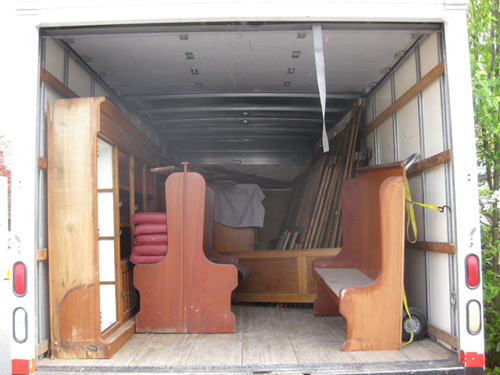
Sliced, diced and on the truck….
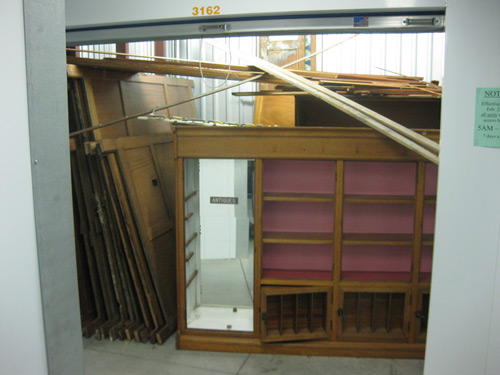
Into storage…
Once the place was taken apart, the contractor again asked me what I wanted. I again told him I wanted it all. He looked at me, very concerned and said, "Nobody does this." He repeated that the pieces had no value, that the time and money to move and rebuild it would not be worth the expense.
But there is value in these scraps of wood, just as there is value in a brand name or an ethos or the intangible aspects that connect us all together. I will admit, I have no idea what I am going to do with an entire ice cream shop, but I can say this:
When I worked at The Corner Confectionary, I felt a part of it.
Now that I have watched it be destroyed, and breathed in the dust from the demolition,
I can truly say: it is part of me.
And as I walk through the halls of Reed Business Information, work with my amazing coworkers who are the lifeblood of these brands, and play a small role in shaping things, I hope that each of us can one day say the same thing about this time and this place; not because the institution has gone away, but because it lives on and thrives beyond us, just as some of these brands have done for more than 100 years.

Well-written article! Your use of metaphor was powerful and the points you've covered are so true.
From ice cream stalls to Chrysler (and the UK auto industry in the late 80s) if you don't give your customers what they want they'll go away, and if you don't at least ask them what they'd like from time to time you don't stand a chance in the longer term.
The people who founded the titles that we work on saw a business need and filled it with the technology that they had. If they were alive today, and starting up new products to fill those information needs they would be using new technology as well as print to meet people's information needs.
Perhaps we could look on the communities of interest around our products as being within 5-20 clicks/steps from our magazine's topics. I'm not sure how that would work but it might give us maps of interest that we could evaluate.